#Consumer Staple Products
Explore tagged Tumblr posts
Text
The J M Smucker Company (SJM) Q4 2023 Earnings Call Transcript
$SJM Q4 2023 Earnings Call Transcript #earnings #markets #investing
The J M Smucker Company (NYSE: SJM) Q4 2023 earnings call dated Jun. 06, 2023 Corporate Participants: Aaron Broholm — Vice President, Investor Relations Mark T. Smucker — Chair of the Board, President, and Chief Executive Officer Tucker H. Marshall — Chief Financial Officer Analysts: Andrew Lazar — Barclays Bank PLC — Analyst Peter Galbo — BofA Securities, Inc. — Analyst Ken Goldman — J.P. Morgan…

View On WordPress
0 notes
Text
ten habits to adopt for a beautiful life 💭

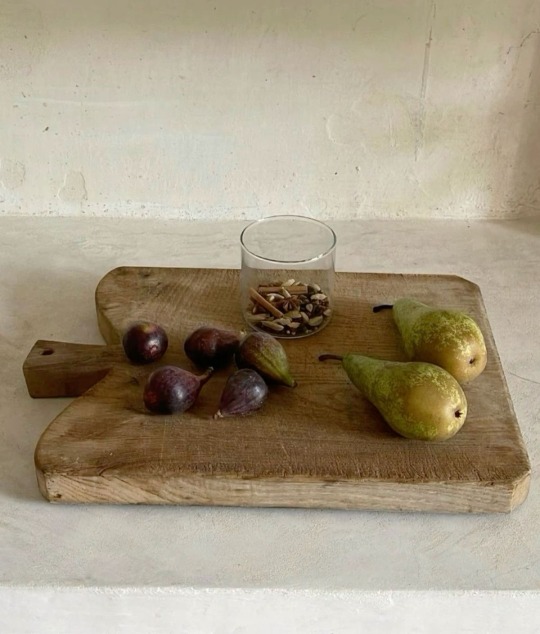
+ curated shopping: rather than over-consume in fast fashion and trends, buy fewer, high-quality items. frequent vintage shops, boutiques, or markets where you can find unique, timeless pieces.
+ focus on wellness and exercise: consider activities that are beneficial for the body and calming for the mind, such as yoga, pilates, or long walks in nature. choose activities that allow you to connect with your surroundings and maintain balance.
+ mindful eating: prioritise healthy, whole foods and cooking meals from scratch. organic produce, artisanal products, and perhaps even locally sourced ingredients could be staples in your kitchen. eating is a mindful practice, enjoyed at a leisurely pace.
+ cultural engagement: regularly visit museums, art galleries, and theatres, or participate in cultural events that inspire and enrich their creative spirit. value learning and exposure to the arts as a way to keep life vibrant and intellectually stimulating.
+ reading and continuous learning: develop a well-curated collection of books, including classic literature, philosophy, and art, and dedicate time regularly to reading and reflecting on what you've learned.
+ minimalist technology approach: stay up-to-date with necessary technology, but maintain a minimalist approach to its use. limit screen time, avoid social media distractions, and instead prioritise face-to-face interactions or hands-on activities.
+ intentional socialising: carefully cultivate your social life, with a focus on deep, meaningful connections rather than frequent, casual interactions. you likely enjoy hosting intimate gatherings at home, where you can experience conversation, ambiance, and connection.
#personal excellence#it girl#it girl energy#that girl#becoming that girl#self improvement#self worth#self care#glow up#level up#self development#lucky girl syndrome#high value mindset#vanilla girl#glow up journey
4K notes
·
View notes
Photo

Amazon is trying to make shopping easier with one tiny button A popular feature that was rolled out over the past year is quickly gaining traction on Shopify and other shopping sites. https://www.thestreet.com/retailers/amazon-shopping-way-easier-with-one-tiny-button
#Retailers#Consumer#INVESTING#Retail#Consumer Staples#Stocks#Top Tech#Tech#GOBankingRates#Online#STOCKS#Investing#Amazon#Consumer Products#Technology#Shopping#E-Commerce#Jena Warburton#TheStreet
0 notes
Text
A Chance Encounter - a cho hyun-ju x reader fic (part 5)

summary: a story about how you and hyun-ju met and the following years of your relationship. part 1 / part 2 / part 3 / part 4 cw: no use of y/n, reader is afab, fluff, slowburn, pre-squid game, slice of life. a/n: hello! bigger chapter for you guys! some more background on our girl and other people in her life. next chapter is the date. i'm currently on a trip with friends, so posting schedule might be crazy. enjoy xx as always, comments are appreciated ♥ taglist: @strayteez3staner @dekiruxxx @jeongteen @sunnysurvives @3leni @etta-huracan @honeyhyunju @basoressia @antisocial-aina @googie-jeon - comment if you’d like to be tagged.
part 5. nerves and anticipation
hyun-ju’s eyes opened before her alarm buzzed—a habit she hadn’t been able to shake even after leaving the military. twelve years of structure and discipline didn’t disappear in a matter of months. the steady rhythm of her mornings was a comfort, even now.
she swung her legs off the bed, her muscles stiff but familiar with the motion. stretching her arms over her head, she felt the faint pull of her shoulders, then stood to stretch her legs. the sheets were swiftly pulled taut and tucked neatly, her bed transformed with military precision.
padding to the bathroom, hyun-ju caught her reflection in the mirror. she stared for a beat longer than usual, then peeled off her clothes, tossing them into the laundry bin before stepping into the shower, turning the knob toward the coldest setting. the icy water shocked her system into wakefulness, a ritual born of her time in the military. in those days, mornings had started early—often before the sun had risen. as a sergeant first class, she had been responsible for overseeing her unit’s readiness and welfare. she would lead them in grueling physical training sessions at dawn, barking commands through frosted air as their breaths formed clouds.
by midmorning, her time would be consumed by inspections, briefings, and tactical drills. she had thrived on the structure, finding solace in the rhythm of endless tasks. between training her soldiers and mentoring junior officers, she had carved out time to pursue a degree in business administration at the korea military academy. the balance was precarious, but hyun-ju had been proud of the way she managed it all, even if the exhaustion had been bone-deep.
but it wasn’t all discipline and grit. she’d been a mentor, too—a steady presence for her team. her soldiers had come to her with everything from strategic questions to personal fears. she’d thrived on the structure and camaraderie, even as it tested her limits. now, the rigor of those days was a memory, but her mornings remained sacred.
after drying off and wrapping herself in a towel, she began her skincare routine, methodically layering products while her mind wandered. teeth brushed, hair brushed, oiled and tied, she returned to her bedroom to pull on her favorite sports bra, loose joggers, and an oversized shirt. she was sitting to put on her socks when the alarm on her phone buzzed.
6:30 a.m., right on schedule.
in the kitchen, she boiled water for black coffee and set out her pills for the day—vitamins, hormone supplements, phytoestrogens, collagen. beside them were her gym staples: creatine and bcaa powder. after swallowing the pills with a gulp of water and sipping her coffee, hyun-ju laced up her sneakers, grabbed her phone and headphones, and headed out.
the faint hum of seoul awakening surrounded her—bakers pulling down shutters, early commuters shuffling to the bus stop. she greeted mr. soo, the building janitor, with a polite nod before breaking into a light jog. her pace quickened as her muscles warmed, the steady rhythm of her feet striking the pavement grounding her in the present. by the time she reached the gym, she was ready for the burn of leg day. the familiar ache in her quads and calves was like an old friend, a reminder of what her body could endure.
after her session, hyun-ju walked home, stopping by a fruit vendor to grab an apple. she peeled the sticker off absentmindedly as she walked, biting into the crisp sweetness and savoring the small indulgence. back in her apartment, she showered again, made a quick breakfast, and settled at her desk with her laptop.
job hunting had become a necessary part of her routine, though not one she enjoyed. she scrolled through listings, tailoring her résumé to each one. she wasn’t applying for anything lofty—assistant positions, entry-level management roles—but the rejection emails piled up all the same.
it wasn’t her qualifications. she knew that. her degree spoke for itself. her twelve years in the military had taught her leadership, logistics, and discipline. she could oversee teams, conduct training, handle logistics, and more. but none of that seemed to matter.
hyun-ju suspected why. the truth was, being trans made her an easy target for rejection. employers didn’t say it outright, but she saw it in their hesitation, the way their smiles faltered when they met her in person.
the thought stung, but she pushed it aside. she had other things to focus on today.
*
the rest of her morning passed in small, familiar rhythms: emails, light cleaning, and a quick lunch. by early afternoon, she was heading out again for her endocrinologist appointment. the check-in on her hormone levels was routine but reassuring—a reminder that her body was aligning more closely with her sense of self.
from there, she walked to her therapist’s office, the quiet space a sanctuary from the noise of her thoughts.
“i still feel stuck,” she admitted, her hands gripping her knees. “like i’m not moving fast enough. not doing enough.”
her therapist’s voice was calm and measured. “you’re doing what you can, hyun-ju. progress isn’t about speed—it’s about showing up for yourself, day by day.”
the words echoed in her mind as she left, the late afternoon sunlight painting long shadows on the pavement.
with time to spare before her evening support group, hyun-ju headed to her favorite café. the scent of roasted coffee beans and the low murmur of voices welcomed her as she settled into a corner seat with her laptop.
she had planned to work on budgeting for her next surgery, but your laugh caught her attention first, light and easy as you chatted with the barista. when your eyes met, her pulse quickened.
the conversation that followed was natural, though hyun-ju felt a mix of relief and guilt. you’d teased her gently about her unread messages, and she’d explained, hesitantly, how much she had overthought replying.
by the time you left, her heart felt lighter. the warmth of your presence stayed with her, your parting words—“see you tomorrow”—echoing in her mind.
hyun-ju lingered at the café long after you had left, her laptop open in front of her but forgotten. the noise of the café—the soft murmur of conversations, the occasional hiss of the espresso machine—faded into the background as her thoughts took over. she had tried to focus on her spreadsheet, crunching numbers for her next surgery, but her mind kept drifting back to you.
you had been kind, patient even after weeks of her silence. your teasing had been gentle, and your warmth felt genuine. it was disarming. hyun-ju wasn’t used to people like you—people who stayed, even when she gave them every reason to walk away.
she closed her laptop and stared out the window. the evening light stretched shadows across the pavement, and she wondered if she was finally ready to let someone into her carefully constructed world.
her thoughts drifted to the support group and the friends who had helped her get this far. she hadn’t been looking for a support group when she found it, but it had become a cornerstone of her routine, every thursday evening. the meetings were an anchor, a place where she could exhale and be herself without fear of judgment.
hyuk, one of the first friends she’d made there, was impossible to miss. his energy filled every room he entered, his sharp humor often breaking the tension during heavy discussions. hyuk was a dj—loud, lively, and unapologetically himself. he had once shown her a gallery on his phone of all the noise complaints he’d received from neighbors.
“what can i say?” he’d joked. “some people just can’t handle the bass.”
his girlfriend, mina, was his opposite in many ways—soft-spoken, with a melancholic air that balanced hyuk’s boldness. she attended the group occasionally, offering her perspective as the partner of a trans man. mina’s kindness was unassuming, but her insights often stayed with hyun-ju long after the meetings ended.
hyun-ju had other friends there, too. autumn, an american, and jaidee, a thai woman whose stories of her homeland painted vivid pictures in hyun-ju’s mind. through jaidee, hyun-ju had learned about the strides thailand had made in lgbtq+ acceptance. she dreamed of visiting one day, maybe even moving there to find the kind of freedom she longed for.
the group was a patchwork of stories and identities, each person carrying their own struggles and triumphs. for hyun-ju, it was a reminder that she wasn’t alone—that there were people who understood, even if the rest of the world didn’t.
a week ago, after a meeting, hyuk and mina had pulled her aside. the support group meeting had just wrapped up, and hyun-ju lingered by the snack table, fiddling with the edge of a biscuit. across the room, mina caught hyun-ju’s eye and waved. hyuk followed her gaze and grinned.
“you’re not sneaking out without talking to me, are you?” hyuk called as they approached.
“i wasn’t sneaking,” hyun-ju said, though her tone lacked conviction.
“you absolutely were,” hyuk teased, gesturing to a pair of empty chairs in the corner. “c’mon. spill it.”
mina offered her a cup of tea. “peppermint. figured you’d like it.”
“thanks,” hyun-ju said, cupping the warm drink and trying not to meet hyuk’s expectant gaze.
hyun-ju hesitated but followed them, sinking into one of the chairs as mina sat on hyuk’s lap, her legs crossed neatly.
“so, what’s got you looking like you’re carrying the weight of the world?” hyuk asked, leaning back with his typical grin.
mina gave hyun-ju a kind smile, her soft brown eyes full of curiosity. “if he’s being too pushy, just tell me. i’ll rein him in.”
“no, it’s fine,” hyun-ju said quickly, her fingers tightening around her tea. “i just… i think i messed something up.”
hyuk tilted his head, his grin fading slightly. “with who?”
hyun-ju hesitated, glancing between them. “there’s this girl. she helped me after my surgery—got me home and everything. she gave me her number, but… i haven’t replied to her messages. it’s been weeks.”
mina leaned forward slightly. “that’s really sweet of her. why haven’t you replied?”
“i don’t know what to say,” hyun-ju admitted, her voice barely above a whisper. “and what if i say the wrong thing? or what if she doesn’t actually like me that way, and i’m just reading into things?”
hyuk blinked at her. “how many messages?”
hyun-ju pulled out her phone and reluctantly handed it over. hyuk’s eyes widened as he scrolled through the unread texts. “hyun-ju, this is brutal. she’s practically writing you a novel.”
mina peeked over his shoulder, wincing. “oof. yeah, this isn’t great.”
hyuk grinned, holding the phone up like it was evidence in a trial. “you’re leaving her hanging like this? no wonder you’re fidgety. the guilt must be eating you alive.”
“it is,” hyun-ju admitted, burying her face in her hands.
mina reached out, patting her arm. “it’s okay. you can fix this.”
hyuk let out a soft snort. “you’re overthinking this. she wouldn’t have given you her number or sent all those messages if she didn’t care. you think she’s texting you for fun?”
“hyuk,” mina said gently, placing a hand on his arm before turning to hyun-ju. “what he means is, she sounds like someone who genuinely wanted to connect with you. what’s stopping you from reaching out?”
hyun-ju shrugged, staring at her tea. “i don’t think i’m ready.”
mina tilted her head. “ready for what? a relationship? a conversation? something more?”
hyun-ju opened her mouth, then closed it again, struggling to find the right words. “i don’t know,” she said finally. “sometimes it feels like… like i’m not enough yet. like i need to be further along before anyone would really want me.”
hyuk let out a sharp breath, shaking his head. “hyun-ju, listen to me. i have been there before, okay? you’re enough right now. not next year, not after your next surgery, not when you feel like you’ve checked all the boxes. right now.” he frowned and sighed before continuing.
“sorry, but that’s crap, and you know it. you’re enough right now. you don’t have to hit some magical milestone to deserve to be happy.”��
“oh, absolutely,” mina said dryly, rolling her eyes. “but seriously, hyun-ju, the right person isn’t going to care about where you are in your journey. they’ll care about you.”
hyun-ju blinked, her eyes stinging. “but what if i ruin it? what if i say the wrong thing, and she decides i’m not worth it?”
hyuk gave her a pointed look. “and what if you say the right thing, and it turns into something amazing? you’re too busy focusing on the worst-case scenario to see the best one.”
mina reached over, her voice warm. “hyun-ju, it’s okay to be scared. but don’t let that fear make decisions for you. even if she doesn’t feel the same way, at least you’ll know. and if she does… well, isn’t that worth the risk?”
hyun-ju exhaled shakily, the knot in her chest loosening just slightly. “i don’t know. maybe.”
“take your time,” mina said, her smile kind. “but don’t wait so long that you lose the chance.”
hyuk grinned, leaning back in his chair. “and when you do text her, let me know. i want updates.”
hyun-ju laughed despite herself, shaking her head. “thanks, both of you.”
“anytime,” mina said, standing and brushing off her skirt. “now, we’ve got a party to drag you to this weekend, so get ready.” hyun-ju groaned, but the smile lingering on her lips was genuine.
so when hyun-ju walked into her support group later that evening and locked eyes with hyuk smiling, he gave her a grin and a knowing look.
“well?” he asked, crossing his arms.
hyun-ju smiled. “we’re going on a date tomorrow.”
“finally,” he said, clapping her on the back. “now don’t mess it up.”
“thanks for the vote of confidence,” hyun-ju said dryly, but her smile lingered.
*
the following night, the weight of the day began to shift. therapy had left hyun-ju with a lot to think about, and the memory of her conversation with you at the café lingered in her mind like a warm ember. the way you’d smiled at her, the light teasing in your tone, the easy way you’d leaned across the table as though the space between you didn’t exist—it had all felt surreal.
now, standing in front of her wardrobe, hyun-ju realized she was nervous.
she wasn’t the type to get flustered easily. growing up, she’d been the one to speak up first, the one who led the charge in games and group projects. even in the military, she’d been confident and self-assured, her voice steady as she commanded her unit. but this—getting ready for a date with you—felt entirely different.
her fingers trailed over the hangers, her eyes scanning the options. most of her wardrobe was practical—clothes meant for comfort or the gym. but tonight wasn’t about practicality. tonight was about showing you a side of herself she rarely let others see.
she settled on a sleek black turtleneck that hugged her figure without feeling too tight and a pair of loose black trousers that tapered neatly at the ankles. simple, understated, but polished.
after laying the outfit on her bed, she turned to the mirror. her hair had grown longer over the past month, the ends now brushing her shoulders. she brushed it carefully, smoothing out any tangles, and debated whether to leave it down or tie it back. after a moment’s hesitation, she decided to leave it loose, the straight strands framing her face.
her makeup routine was straightforward—just enough to enhance her features. a touch of foundation, a hint of blush, a swipe of eyeliner to accentuate her eyes. she paused when she reached for her lipstick, her mind flashing back to the way your gaze had lingered on her lips at the café. she chose a soft, rosy shade, something subtle but noticeable.
by the time she was dressed, her nerves had settled into a quiet hum of anticipation. she checked her reflection one last time, smoothing the fabric of her turtleneck and adjusting her hair.
her phone buzzed on the nightstand, and she smiled when she saw your message:
“just finished getting ready. heading out soon. see you at 7!”
hyun-ju’s heart skipped a beat. she typed back quickly:
“can’t wait. i’m on my way now. i’ll share my location with you.”
she grabbed her coat—a long, dark wool one that had been a gift from her mother two winters ago—and wrapped her blue scarf around her neck. the scarf was soft and worn, the kind of item that carried memories with it.
as she stepped out of her apartment, her breath visible in the crisp evening air, she felt a mix of excitement and apprehension. the last time she’d let herself hope for something like this, it hadn’t ended well. but tonight, she wanted to believe.
*
your apartment was a flurry of activity as you got ready, ha-neul sprawled on your bed, her face stuck in her phone, offering unsolicited advice.
“can i crash over tonight?” ha-neul asked “viktor is going to mine to get his stuff, i don't want to see his fugly face.”
“yes.” you said from your place on the floor in front of the mirror, where you finished your makeup.
“are you really going to wear that?” she teased, pointing at the outfit you’d laid out.
“yes,” you replied, rolling your eyes. “it’s a date, not a fashion show.”
ha-neul sat up, smirking. “but it’s your first date with her. you have to make an impression.”
“i think she’ll survive if i don’t show up looking like i stepped out of a magazine,” you said, though your tone lacked conviction.
ha-neul raised an eyebrow. “uh-huh. and yet, you’ve tried on three different pairs of boots in the last ten minutes.”
you threw a pillow at her, laughing despite yourself. “fine, maybe i’m a little nervous.”
“a little?” ha-neul said, dodging the pillow. “you’ve been talking about her nonstop since the yesterday.”
you paused, your cheeks warming. it was true—you hadn’t been able to stop thinking about hyun-ju. the way she’d apologized for not replying to your messages, the softness in her voice when she said your name, the way her dark eyes seemed to hold a thousand unspoken thoughts.
“she’s… different,” you admitted, your voice quieter now.
ha-neul’s teasing expression softened. “i know. that’s why i’m rooting for you.”
you smiled, turning back to the mirror. your outfit was simple but flattering—a fitted coat over a sweater dress, paired with tights and heeled boots that added just enough height to make you feel confident. you added a pair of earrings, small and understated, and ran a hand through your hair.
when your phone buzzed with hyun-ju’s message, you couldn’t help the grin that spread across your face.
“can’t wait. i’m on my way now. i’ll share my location with you.”
“she’s on her way,” you said, glancing at ha-neul.
ha-neul let out a dramatic cheer. “look at you, all giddy. go get her, tiger!”
“shut up,” you said, laughing as you grabbed your bag.
as you headed out the door, your phone buzzed again. this time, it was hyun-ju sharing her location. you opened the map, watching the small icon that marked her position move steadily toward the restaurant.
in the backseat of the uber, you snapped a quick selfie, angling the camera to catch your best side. the photo was playful, your lips curved into a soft smile, your eyes bright with anticipation.
“on my way,” you captioned it, hitting send before you could overthink it.
her reply came quickly:
“you look amazing. i’m waiting inside. it’s too cold to stay out.”
you couldn’t help the small laugh that escaped you. hyun-ju’s straightforwardness was one of the things you liked most about her.
*
when hyun-ju saw your selfie, her heart skipped a beat. you looked radiant, your smile soft and inviting, your confidence practically leaping off the screen. she stared at the photo for a moment longer than necessary before typing her reply.
inside the restaurant, she sat at a corner table, her hands resting lightly on the surface. the room was warm and inviting, the soft hum of conversation and the faint clinking of glasses creating a cozy atmosphere. she glanced toward the door every few minutes, her anticipation building with each passing second.
when you finally walked in, hyun-ju stood, her breath catching as your eyes met. you smiled, your face lighting up in a way that made her chest tighten.
and just like that, the nervousness melted away.
#player 120 x reader#cho hyunju#player 120#cho hyunju x reader#player 120 x you#player 120 x y/n#cho hyunju x you#cho hyunju x y/n#squid game#round 6#squid game season 2#squid game 2#squid game netflix#squid game s2#hyunju#park sung hoon#hyun ju#hyun ju x reader#hyun ju squid game#hyun ju x you#hyun ju x y/n#hyunju x reader#hyunju x you
184 notes
·
View notes
Text
more slimecicle for you little freaks he's so fun to write
"i swear you won't even know i'm there," charlie pleaded with you from the bed. he watched as you sat at your desk, working on a project you needed to finish before the night was over.
"between my thighs? yeah, charlie, i'm sure," you said with a roll of your eyes.
"please," he asked again. his voice was dripping with desperation, making it hard to say no.
but you were strong, determined to finish your tasks on time. "baby, you know i love when you get like this, and ordinarily i'd let you, but i need to stay focused," you replied sweetly. you heard him get off the bed and listened as his footsteps led him to kneel down next to you in your chair.
he looked up at you with wide, lustful eyes and took your hand gently. "please," he begged. he looked pathetic. the fact that it was you he was craving, you he wanted to taste so bad? it overrode any shred of reason and made your brain short circuit.
"charlie, baby," you sighed, taking back your hand and using it to cup his face. "can you give me, like, twenty minutes? to be productive? and then you can sit under my desk while i wrap it up, how does that sound?"
his face lit up as he nodded fervently, his eagerness to please you apparently more consuming than his desire to devour you. you patted his head, smiling softly at him before turning back to work on your task. "gonna set a timer?" he asked quietly after a moment.
you huffed, feigning annoyance, and pulled out your phone, setting and showing him a timer. he nodded again and adjusted himself, shifting on his legs as he waited patiently for the time to run out.
five minutes in, he was fiddling with a hair tie you lent him months ago. he wore it every day, it reminded him of you and how infatuating you were. it had become such a staple in his everyday wardrobe that he felt naked whenever he was without it. you glanced at him, noticing how he wrapped the elastic around his fingers again and again until unraveling it and repeating the process. you guessed it was helping him cope with not being located between your soft thighs.
halfway through, you softly let him know how much longer he had to go. he hummed quietly in response, moving to sit in a different position. he tried not to draw attention to himself as he squeezed his thighs together, embarrassingly desperate for your touch, but you noticed out of the corner of your eye and smiled. he was already making it hard to concentrate on this, and he wasn't even doing anything.
fifteen minutes down, he was leaning against your desk, head tilted back ever so slightly. you tried so hard not to stare at the tent between his legs; you only had five minutes left to get as much done as possible. he was surely daydreaming about you at this point, whimpers leaving his mouth whenever his groin twitched. he always looked downright pitiful when he got like this, and you adored how bad he wanted you. nothing ever made you feel as desired as charlie did.
when the timer went off, you still had a sizeable chunk of work that needed to get done. but, you had made a promise, and he jumped up at the alarm. pawing at the chair you were in, he mumbled, "please, please," until you sighed and gave in, scooting back to let him crawl under the desk. he shuffled in excitedly, not even grunting in pain when he hit his head on the underside.
you gasped softly as he pulled your bottoms off, leaving you bare for all of two seconds before he planted a sloppy, open mouthed kiss to your core. he spread your thighs open a bit more and shoved his face in, burying his tongue deep in you while his nose brushed up against your clit repeatedly.
you closed your eyes and let the noises spill from your lips, forgetting momentarily about the work that needed to be done. he just kept going, licking and sucking, and after a while of constant stimulation, you wondered if he was even breathing. a bit later, you remembered you weren't done, and you tried to get back to doing work, but the never-ending barrage of kisses to your dripping cunt made that impossible.
"god, fuck, charlie, this is why i said no," you grumbled. "need to finish this shit so bad and i just can't with you doing this."
he made a noise into your pussy, sending vibrations rippling through your body. your hips stuttered forward, thighs closing against his face and trapping him there. he moaned again, apparently enjoying the suffocation, and wrapped his arms around your legs, pushing them closer against him.
you were loud at this point, work long forgotten as you squeezed your legs against his head, cooing out praises. "ohhh, good boy, charlie," you sang. "fuck, you make me feel so fuckin' good. what a good boy f'me." he somehow became more ravenous and pushed you closer towards the edge, moaning and whimpering into your heat as he worked tirelessly to make you cum. it was all for you, always, every time. he loved making you feel good, he felt sometimes it was the very reason he existed.
when you came, you tangled your hands in his hair, pulling tightly and bringing him impossibly closer. he relished in your screams, savoring the "good boy!" you let out one last time before releasing all over his face. he kept going for a bit, testing you, seeing how much overstimulation you could take, before finally pulling away when you told him to.
you scooted back to let him out from under the desk, but he didn't emerge until a few minutes later, chest heaving as he tried to catch his breath. when he finally stood up, a dark stain stood out on his clothed crotch, evidence that he had enjoyed this just as much as you. you teased him for it, offering to help, but he just shook his head.
"all i needed was to taste you," he panted before leaning down to kiss you. the taste of yourself on his lips was intoxicating, and you hopped up to start a shower for the both of you so you could have a cozy night in bed, the work you so desperately needed to finish sitting abandoned still on the monitor.
268 notes
·
View notes
Text
The flotsam and jetsam of our digital queries and transactions, the flurry of electrons flitting about, warm the medium of air. Heat is the waste product of computation, and if left unchecked, it becomes a foil to the workings of digital civilization. Heat must therefore be relentlessly abated to keep the engine of the digital thrumming in a constant state, 24 hours a day, every day. To quell this thermodynamic threat, data centers overwhelmingly rely on air conditioning, a mechanical process that refrigerates the gaseous medium of air, so that it can displace or lift perilous heat away from computers. Today, power-hungry computer room air conditioners (CRACs) or computer room air handlers (CRAHs) are staples of even the most advanced data centers. In North America, most data centers draw power from “dirty” electricity grids, especially in Virginia’s “data center alley,” the site of 70 percent of the world’s internet traffic in 2019. To cool, the Cloud burns carbon, what Jeffrey Moro calls an “elemental irony.” In most data centers today, cooling accounts for greater than 40 percent of electricity usage.
[...]
The Cloud now has a greater carbon footprint than the airline industry. A single data center can consume the equivalent electricity of 50,000 homes. At 200 terawatt hours (TWh) annually, data centers collectively devour more energy than some nation-states. Today, the electricity utilized by data centers accounts for 0.3 percent of overall carbon emissions, and if we extend our accounting to include networked devices like laptops, smartphones, and tablets, the total shifts to 2 percent of global carbon emissions. Why so much energy? Beyond cooling, the energy requirements of data centers are vast. To meet the pledge to customers that their data and cloud services will be available anytime, anywhere, data centers are designed to be hyper-redundant: If one system fails, another is ready to take its place at a moment’s notice, to prevent a disruption in user experiences. Like Tom’s air conditioners idling in a low-power state, ready to rev up when things get too hot, the data center is a Russian doll of redundancies: redundant power systems like diesel generators, redundant servers ready to take over computational processes should others become unexpectedly unavailable, and so forth. In some cases, only 6 to 12 percent of energy consumed is devoted to active computational processes. The remainder is allocated to cooling and maintaining chains upon chains of redundant fail-safes to prevent costly downtime.
522 notes
·
View notes
Text
Bees and Honey 👇
🐝Some interesting facts about bees 🐝
Here are 20 interesting facts about the importance of honey and bees:
1. Did you know that honey never spoils? Archaeologists have found pots of honey in ancient Egyptian tombs that are over 3,000 years old and still perfectly edible!
2. Did you know bees are essential for growing many of our foods? They pollinate about one-third of the food we eat, including fruits, vegetables, and nuts.
3. Did you know honey has natural healing properties? It can help soothe sore throats and even speed up the healing of wounds and burns due to its antibacterial qualities.
4. Did you know bees produce a tiny amount of honey in their lifetime? A single worker bee produces only about 1/12th of a teaspoon of honey in her entire life, but together they make a lot!
5. Did you know bees communicate through dancing? They perform a "waggle dance" to tell other bees where to find the best flowers.
6. Did you know honey can help your brain? It contains antioxidants that may support brain health and improve memory.
7. Did you know beeswax, made by bees, is used in many everyday products?** It's found in things like candles, lip balm, and even some types of food packaging.
8. Did you know honey can be a natural energy booster? It provides a quick source of energy because it's packed with natural sugars.
9. Did you know there are over 300 types of honey in the United States alone? The flavor, color, and aroma depend on the flowers that bees visit.
10. Did you know that beekeeping helps many communities around the world? It provides income, supports agriculture, and helps improve food security in many regions.
11. Did you know honey can be used as a natural preservative? Because of its antibacterial properties, honey has been used to preserve fruits and other foods for centuries.
12. Did you know that some bees can recognize human faces? Studies have shown that honeybees can remember and recognize human faces, much like they remember different flowers.
13. Did you know honey can improve your sleep? A spoonful of honey before bed can promote relaxation and better sleep by raising insulin slightly and allowing tryptophan to enter the brain.
14. Did you know bees are colorblind to red? Bees can see ultraviolet light, which humans can't, but they can't see the color red. Instead, they see it as black.
15. Did you know honey can help with seasonal allergies? Consuming local honey is believed by some to help build immunity to local pollen and reduce allergy symptoms.
16. Did you know that royal jelly, produced by worker bees, is fed to all bee larvae? However, only those destined to become queens are fed royal jelly throughout their development.
17. Did you know honey has different medicinal uses in various cultures? For example, in Ayurvedic medicine, honey is used to treat digestive issues, and in ancient Egypt, it was used to treat wounds.
18. Did you know bees have a built-in GPS? They use the position of the sun, the earth's magnetic field, and their own memories of landmarks to navigate and find their way back to the hive.
19. Did you know honeybees are the only insects that produce food eaten by humans? They are unique in their production of honey, which has been a staple in human diets for thousands of years.
20. Did you know that honey can vary greatly in taste and texture? The type of flowers the bees pollinate affects the flavor, color, and texture of the honey. Some honey can even be creamy or spicy!
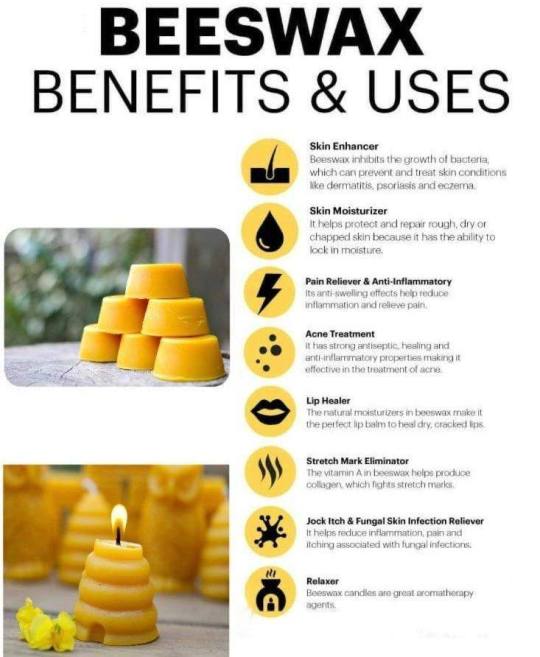
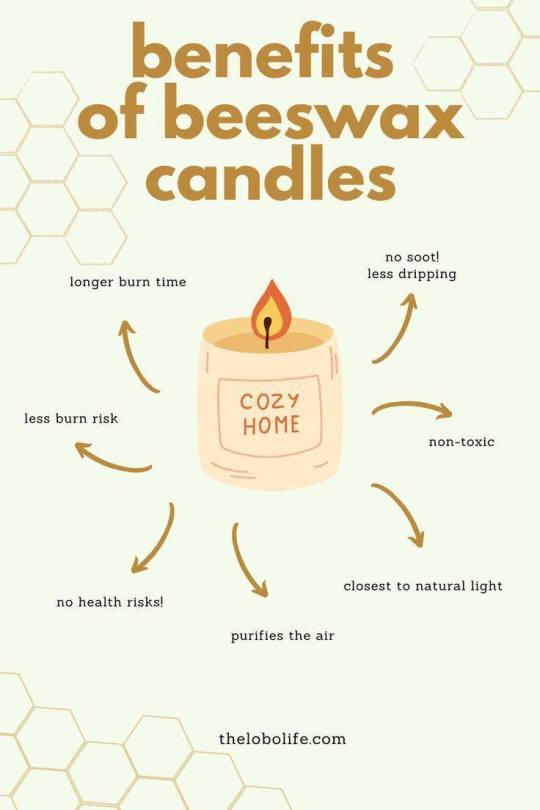
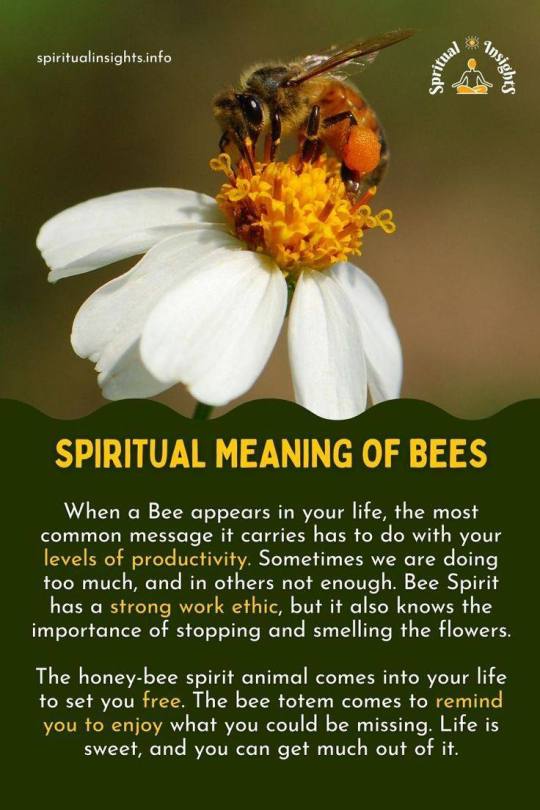
#pay attention#educate yourselves#educate yourself#knowledge is power#reeducate yourself#reeducate yourselves#think about it#think for yourselves#think for yourself#do your homework#do your own research#do some research#ask yourself questions#question everything#bees#honey#save the bees#nature#healing
208 notes
·
View notes
Note
Would you support a tax on animal products?
I wouldn’t support a tax solely on animal products, that wouldn’t make much sense while they are still being subsidised. Instead, I’d advocate for lifting subsidies for animal products and other environmentally destructive products, and instead subsidising sustainable, plant-based options.
I’d also support ‘true cost’ pricing, where consumers are made to pay the true cost of unsustainable products, to cover their environmental cost as well, alongside significant corporate taxes for the bigger polluters. That needs to be within reason, you can’t put fuel prices at true cost without massive inflation. It also needs to be offset by cheaper sustainable options, so that consumers aren’t just footing the bill. We can do that by using the money gained to subsidise healthy, plant-based staples, meaning that even the poorest could afford to eat fresh fruit and veg.
Redirecting the subsidies from meat, dairy and wool alone would mean that plant-based foods and fabrics would be much cheaper. It would also save millions in health care costs, and free up a significant amount of land as we transition towards less animal agriculture. This could be used for rewilding and to create social and affordable housing.
This all sounds a bit pie in the sky, but we need a radical, war-time level mobilisation, huge systematic changes, as well as public and government effort to avert the worst impacts of climate change. Had we started to make even small adjustments in the 1970’s we could now be doing the modest sort of stuff governments are still proposing now, but we are just so far past that at this point. We need radical, rapid change.
39 notes
·
View notes
Text
people don’t even know deli meat and hotdogs are carcinogens.
because it would be bad for our economy if people understood their diet staples as something that caused harm to their health.
When conscious efforts are made to raise public awareness on health issues: Like smoking
we see a general trend of people losing interest in consuming them
Or consuming them only for special events because they are somewhat aware the thing they like is not particularly good for them: weekend relaxation and parties for alcohol
But people in general do not think the lunchmeat diet staple is anything but healthy. It is marketed as actual health food alongside avocados and lettuce despite actual evidence suggesting higher consumption of the product can give people cancer.
The response to this is “everything gives people cancer”
Which also simply isnt true, this was another campaign of disinformation to make people care less about their health
And I am reminded it was precisely when the young lords and the black panthers began caring about the health of their communities that the CIA started cointelpro.
35 notes
·
View notes
Text

🎀Welcome To The Desire Diaries🎀
From fashion must-haves to beauty essentials and home decor, this series will showcase a curated selection of products that are currently on my wishlist.



Victoria’s Secret Slippers
I’ve been on the hunt for the perfect cozy slippers, and of course, I went to Victoria’s Secret to look for some. They have the classic pink and white stripes and add a touch of chic to my loungewear. They would be great to wear during the VS show. Especially if it moves back to December next year, they would be the perfect fuzzy slippers to wear on a winters night to watch the show!
{Inspiration}



[above photos from Pinterest, dm for credit if these are yours!]



3-tier Storage Trays
I am always looking for cute ways to display and store everything, I think this storage tray is perfect, cute, and very versatile. It seems perfect for displaying makeup, skin care, bath products (bath bombs, bubble salts, bubble soap, etc.), or...you can use it for its intended purpose...deserts. Like I said, very versatile.
{Inspiration}



[above photos from Pinterest, dm for credit if these are yours!]



Batiste Dry Shampoo
For me, dry shampoo is something I have only started using recently. It's the only thing that can add volume to my hair, especially when I part my hair to the side. I have yet to invest in a big bottle, I've only bought travel sized bottles to put in my backpack, and I've only heard good things about Batiste. If you have tried their products, let me know how you feel about them, and if you have any other recommendations of their products!



Philosophy Body Shower Gel
Philosophy, take all my money. I don't buy them often, because of the price, but it's always a staple in any of my wishlists. Bonus points for the ones with recipes, which I have yet to try. But I am curious, have you ever tried a Philosophy bottle recipe? If so, how did it turn out?
{Inspiration}
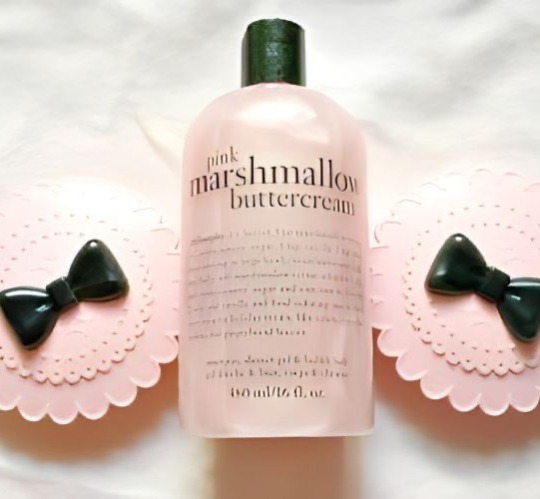
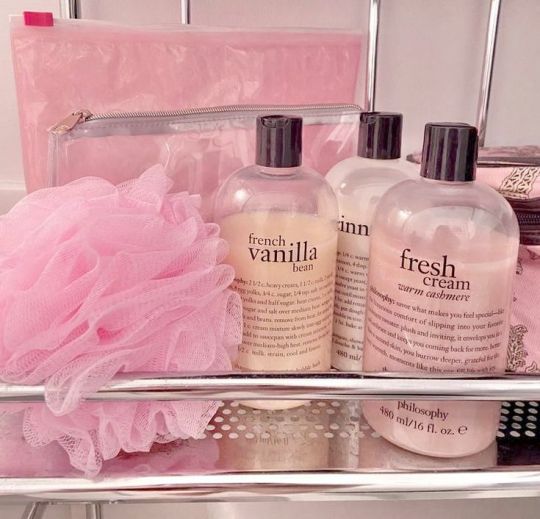
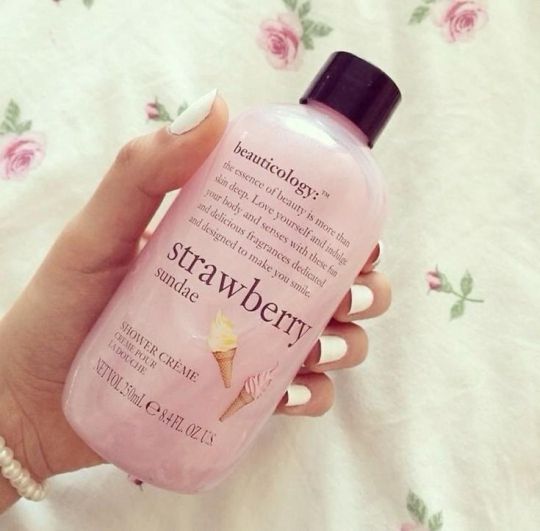
[above photos from Pinterest, dm for credit if these are yours!]



Yves Saint Laurent: The Complete Haute Couture Collections
Despite not having a coffee table, I am a collector of coffee table/display book. However, I do like cute books that I will actually read/look through. Recently I've only been consuming fashion brand’s archive looks, currently on my wishlist is this YSL collection book.
{Inspiration}

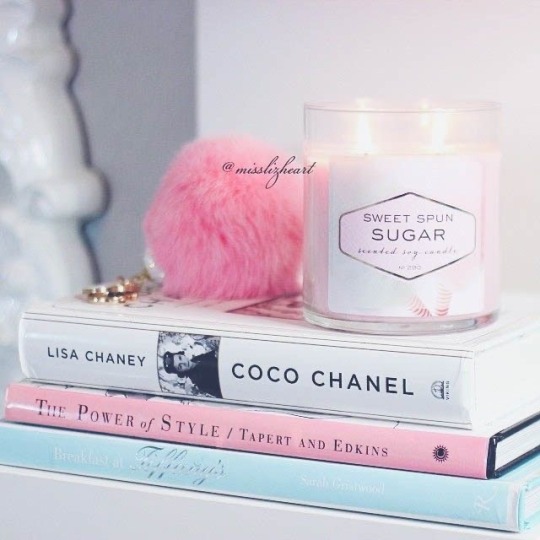

[above photos from Pinterest, dm for credit if these are yours]
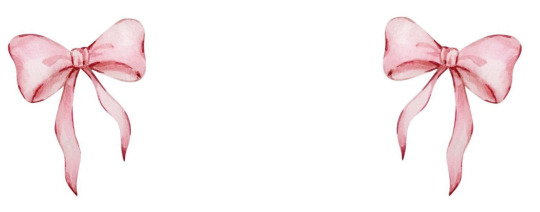
#The Desire Diaries#2014#2014 aesthetic#2014 nostalgia#2014 revival#2014 tumblr#2014 vibes#2015 aesthetic#2015 vibes#2012 tumblr#2013 aesthetic#twee#2012 aesthetic#2012 nostalgia#2012 revival#2012 vibes#2013 nostalgia#2013 tumblr#2013 girly#2014core#bring back 2014#2014 girl#i miss 2014#i miss 2015#2015 nostalgia#2015 tumblr#2016 tumblr#2016#2016 aesthetic#2010s
33 notes
·
View notes
Text
Aurora Cannabis Inc (ACB) Q3 2023 Earnings Call Transcript
$ACB Q3 2023 Earnings Call Transcript #earnings #markets #investing
Aurora Cannabis Inc (NYSE: ACB) Q3 2023 earnings call dated Jun. 14, 2023 Corporate Participants: Ananth Krishnan — Vice President of Corporate Development and Investor Relations Miguel Martin — Chief Executive Officer Glen Ibbott — Chief Financial Officer Analysts: Michael Lavery — Piper Sandler — Analyst Frederico Gomes — ATB Capital Markets — Analyst Pablo Zuanic — Zuanic & Associates —…

View On WordPress
0 notes
Text
A Naruto Headcanon - The Culinary History of the Ninja World.
i'm back and not so bare with me. this headcanons is related to a story telling how chouji and karui's marriage went down. ill post it eventually.
EACH COUNTRY’S CULINARY HISTORY
Konohagakure (Country of Fire) Konohagakure aka the land of the free. Many things make up the uniqueness of the cuisine of the country of fire. First, they are the king of importation, so their diet is really diverse and touched all sectors evenly. They grow all kind of vegetables to meet the need of its residents. While there are not has much native plants from the area in their current diet contrary to other villages like Suna and Kiri.
Konoha being built on a vast forest, their main fruit consumption comes from small fruit trees and fruit trees like apples, pears, and pomegranate. Anything that grows on a tree is often easily available since it takes its roots in Konoha’s founder Hashirama Senju.
The country are the main producer and consumer of eggs and meat especially pork (which they export all over the ninja world) this where you get the whole BBQ concept and omelets. Another downfall of the cuisine from Konoha is the heavy presence of processed goods in everyday cooking preparation. The current culture is far more removed from its traditional cooking methods. Referred to as the Senju Diet is almost getting lost and seen has a flower from the past. Many (often older individuals) resist the hard change that came trough time and tries to uphold the consumption of the way ninjas ate in the past.
Lotus Root is a staple of the Senju Diet
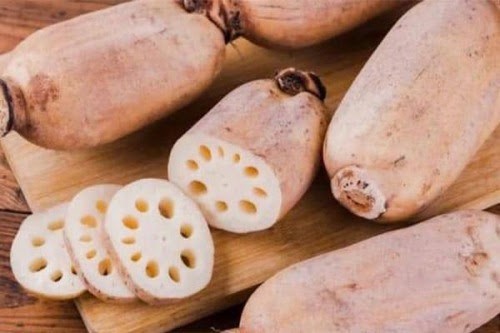
Even Naruto can testify to this and noticed how it hard for him maintain the same diet as when he was a child (aside eating ramen), the way fast foods chains have almost came out of nowhere and took over the market deeply concerns him (especially how its taking hold of this younger generation). The deliberate effort towards modernization and proving the country is the first in everything, can reach everything, can eat everything, can win against anyone basically walking like they are the goat of the ninja world has affected negatively old traditions in subtle ways and in other more obvious ways. Like how the Konoha can keep escape the threat of famine by stealing other nations resources.
At the same time, the combination of different culinary practice gave birth to various more dishes with various diverse ingredients and interesting like Takoyaki, okonomiyaki & dango
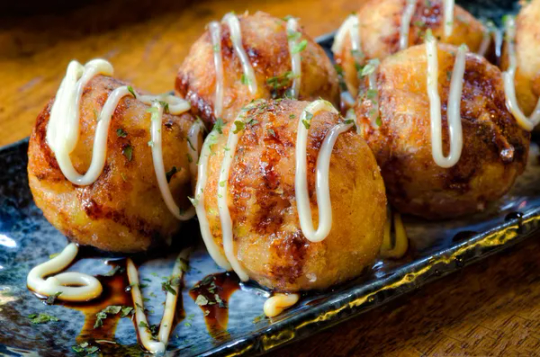
Like mentioned before, industrialization gave birth to many processed who are a staple in those dishes. products who are often only found in the country of fire like fish cakes & narutomaki. The land of fire is the soup & noodles master, it’s like their national food for being convenient and versatile with they make the infamous ramen but other dishes like stir-frys Yes, it a generous filling cuisine to overflow your stomach
Classic/Staple Konoha Meal=Shoyu Miso/Pork Ramen with Narutomaki, Apple Salad, Dango, Sushi, Takoyaki, pickled radish, Beef BBQ
Sunagakure (Country of Wind) The cuisine from Suna is unique. Not only emerging from a desertic land, but it was also able to survive the test of time and stay true to its original roots. Based on the high temperatures and sandy soil of the land of wind, the residents have access to interesting crops who cannot be found elsewhere in the ninja world. Suna is the homeland of dates, they are the main intake of sugar in its diet. They are used in countless recipes like sweet & pastries. they are used to sweetened teas since tea drinking is a big thing. Offering tea is a tradition when receiving guests and tea was used by nomads who made long trip in the desert in order to stay hydrated.

In Sunagakure, they go hard on sweets. Especially dates since the are the only producer of them. They have countless of pastries, candies and date-bases recipes because it was once use as a method of survival in the long windy season in the desert or to have the sugar necessary to be transformed in a energy source to endure long trip in the desert. They are a national pride since most nuts in the ninja world grows in the country of wind; almonds, pistachios, walnuts, etc. they also showcase delicate and unique culinary practices when it comes to pastries who set Suna apart from other nations. It is the only place to find citrus, olive & argan trees used to make oils mostly made for exportation & their lucrative citrus production industry.
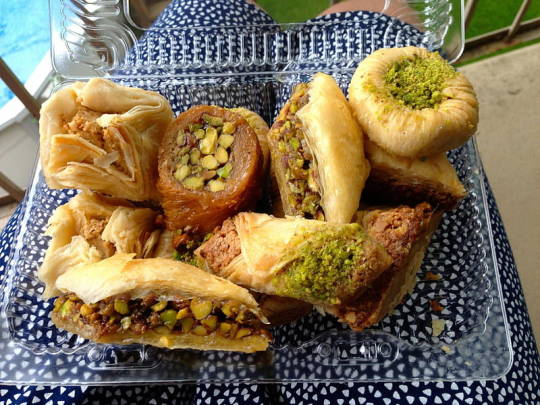
Their eating style is different since it is not uncommon to eat with your hands. For a long time, families were large so the habit of having a large plate to share with many emerge from that condition

Due to frequent drought, the country of wind has specialized themselves in the production of survival crops like grains like millet, sorghum & wheat who are also a staple in the cuisine of Suna. they most of the time milled to make flour to produce various types of bread crepe and flat breads (also see as more convenient since they don’t require yeast to be cooked). Alongside that, the consumption of legumes like lentils and different kinds of beans is the main source of protein and prized as all around superfood. They are cooked in paste and stew often eaten with bread.
Staple/Classic Suna Meal=Large plate of various pastes/creamy sauces made of beans & lentils, grilled eggplant, hummus, flat bread, millet crepe, spinach, citrus tea,
Kirigakure (Country of Water) The main meal is Kiri is grilled fish.
Unfortunately, Kirigakure has the reputation of eating ANYTHING that swims, crawls, run or fly in the ocean. First and firmly base on their location and how the practice of fishing is part of so many residents lives.

Also, it comes from the lack of access to goods from importation of other nations. For very long time, Kiri and the surrounded regions were left on their own when a bad harvest happened, or if the climate hindered the quantity of fish collected. In those cases, the villager learned to make anything of every single thing they found (in the ocean). Due to their different economical system (mostly based on exchange of goods), it took a long time for Kiri to join the market of importation and exportation. Now they are the main exporter of seafood of various types and fish (a staple in their diet). The land of fire became the main consumers of seafood above the country of water itself. The never-ending high demand for sea product (including fish) has opened the door for illegal activity to create non-approved fish farms and illegal fishing. The country of wind is guilty, while having no access to water yet desiring sea products (which is recent because they try to follow after the country of fire and the whole globalization narrative).The Country of Fire being the biggest culprit due to their insatiable desire to reach all and taste all (even without permission).

Their known cultural theft has implication in the problem since a traditional dish named サメの目 (Same no Me written Samenome meaning Shark Eyes) which consist of thin layers of fish rolled and stuffed with black wild rice and bitter herbs (it is name like this since it resemble the pupils of sharks) was ‘’discovered’’ by ninja scientist from Konohagakure during early invasion of the country of water by various bigger nations for natural resources in this case being clay who was abundant along any body of water (used to make pots and tolls before the emergence of various metals) also to take control and harvest the almost infinite amount of fresh water. The devastation of natural habitat and the disruption of the ecosystem cause a destruction that couldn’t be healed instead it changed the nature of the environment. Since then, most bodies of water in the land of water turned into seawater, the once flourishing pastures of green leafy galore died and the remaining surviving plants gave birth to what we know today as bitter herbs (ex: dandelion, wormwood, chamomille, peppermint, etc) and they are a staeple in the cuisine of Kiri, for some their main intake of green plants. They are also valued for their medicinal values (you know them plants Haku was collecting in the woods)
Learn more about bitter herbs here: https://dirthappy.com/bitter-herbs/
(Going back to what we were talking about)The discovery of Samenome was then taken back to the country of fire and after being merged and modified with the local crops and different culinary practices became what we know today as sushi; the captain of Konoha’s cuisine along side with Ramen. The seaweed paper also originally comes from Kiri, they were not used as food but fertilizers for growing crops. The practice of harvesting seaweed became popular in the southern part of the country of fire after the nori seaweed was discovered in its waters. Meanwhile they still import wakame from the country of water since it’s a staple for various soups and side dishes.
In The Country of Water, they consumed more the wild varieties of different crops like wild black rice, quinoa & amaranth as a main source of carbs.
In Kiri, they seasoned everything with pepper, everything; rice, bitter herbs, fish & seafood, grains. Some regions of the country of water house the spiciest pepper you can find in the warm months of the summer and the most frost resistant cabbages during the cold months. Now, they import a lot of pepper product from The country of lightning during the most of the year. Most of the seasoning is onion-based but the access to salt from the waters allowed the spectrum of seasoning to widen but also utilize is in order to ferment or pickle foods for the winter making pickled goods a staple in the cuisine of Kiri even for pickled fish.
Staple/Classic Kiri meal= Grilled fish, Samenome, spicy pickled cabbage, amaranth crepe of fritters, bitter herbs, pepper sauce
Kumogakure (Country of Lightning) The cuisine of Kumogakure is different than typical meals you would find in other nations. Like Suna the uniqueness reveals itself in their cuisine since its most popular dishes are made of ingredients that can only be found in the country of lightning. Cuisine of Kumogakure follows various principals making their reputation.
Beef is a luxury food. Due to its location, residents of the country of lightning were consuming other animals like sheep and goat who are abundant in rocky areas. The first wild buffalos were in fact imported from neighbor countries and are domesticated for food in small quantities because most green pasture (outside of main cities) are already occupied by sheeps. Many attempts were made to grow the bovine population but failed due to competition for food and access to grass.
Meat is more regarded as side dishes since their protein source mostly come from green vegetable and beans. Like in Suna, where legumes are praised for their high nutritional value but in the country of wind they eat lentils & chickpeas, meanwhile in Kumo they are eating kidney beans, black eyes peas and their infamous black beans. Each nation has a particular legume/bean/pulse they cherish in their cuisine. The Country of fire is house to all types of sprouts like of mung bean and edamame/soy beans. Interestingly, the practice of making tofu comes from Amegakure and has spread to neighboring nations. In Kiri, they eat beans in their original form, simple steamed and sometimes raw so they prefer yardlong beans and peas of different kinds.
· The land of lightning is famous for their abundance of herbs & spice. Hence why they weren’t as enthusiast to rush into meat consumption since they can make many vegetables taste amazing by seasoning it right. Plants like ginger, turmeric, various varieties of peppers, allspice, paprika, star anise & parsley are native to the area. the exception is garlic since it can be found abundantly across the ninja world.
· The cuisine of Kumo could be defined as quick and simple. Hence why they are numerous meals in bites sizes like fried dough (a popular street food), samoussa, meat/bean patties, dried sweet potatoes chips (chouji’s favorite). Unfortunately, frying/pan-frying is a prominent method of cooking so to balance the diet the preparation of vegetables filled stews and soups comes in the picture and they don’t eat foods like white rice. First, because it does not grow in the region at all, instead it’s the rare place where eating brown rice is thing and meals like fermented pureed yam are often use as a substitute for rice along many sauces and stews (after white rice became popular across the ninja world.). In Suna, they sticked to basmati rice and Kiri to black rice but white rice & sweet rice (hybridized in the country of fire) has always been one of the first food to be distributed is smaller nations in food crisis and for daily consumption because of how easily it is to massively produce and for their poorer nutritional value.
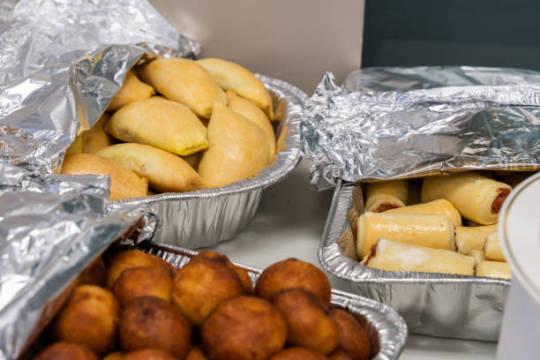
(ex: meat/beans patties, sweet potatoes chips, deep fried dough (bottom pic above) called ふわふわ/Fuwa Fuwa meaning Fluffy since the yeast used to make them creates a treat light and airy/fluffy like clouds & samoussa)
· SAUCE, SAUCE, SAUCE. Again, we said people from the Cloud love when it’s simple (hence why many dishes from Konoha like Takoyaki seems like an equation of calculus to them but those who could taste it enjoyed it actually). Its ‘’we dump all in the pot and let it cook’’ cooking style. If your meal doesn’t have a sauce of any kind, its not from Kumo. Many of them contained some form of peanut butter (a national pride food). The country of lightning is the biggest producer of peanuts and use it in various dishes
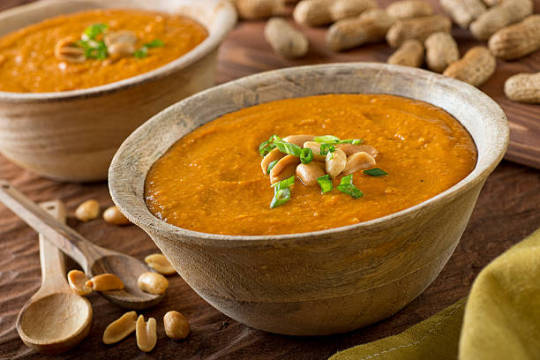
(exemples: peanut soup, fermented cassava pulp, cassava leave sauce, callaloo/amaranth soup, spinach peanut butter sauce )
· Did you know that Kumo’s peanut brittle’s distant cousin is the Nougat from Suna? It’s the Raikage’s favorite snack. Like the menu of the wedding feature the country most prized, popular, and fancy meals, most of them are the raikage’s favorites.
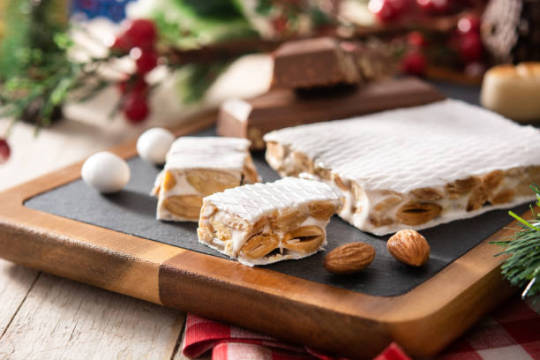
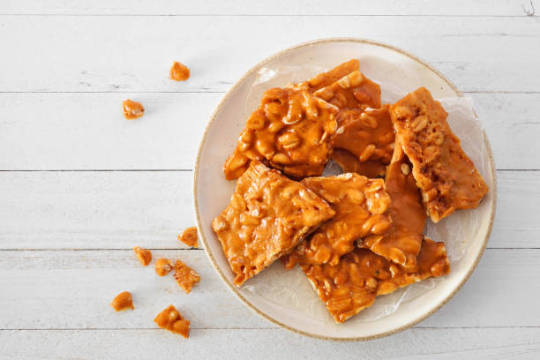
(from left to right, Nougat (from Suna) & Peanut Brittle also called 稲妻バー/Inazuma bars meaning Lightning Bars) because when you prepare them it is tradition to punch the plate in the middle to break it into smaller portions, it looks like the food got hit by lightning.
Many exotic tropical grows outside of big cities like mangos, pineapples & papayas making fruit the main sugar intake in the Kumo diet.
#naruto modern au#naruto#boruto#naruto headcanons#naruto imagines#boruto naruto next generations#boruto headcanons#boruto imagines#headcanons#naruto shippuden#naruto au#naruto uzumaki#haku yuki#zabuza momochi#choji akimichi#karui akimichi#chocho akimichi#konoha#konohagakure#sunagakure#KIRIGAKURE#kirigakure#kumo#kumogakure#killer bee#anime food#food#sasuke uchiha#headcanon#imagines
156 notes
·
View notes
Text
Hannibal food themed episodes
France 🇫🇷
Apéritif - Apéritifs are drinks, typically alcoholic, that are normally served before (apéritif) or after (digestif) a meal respectively. An apéritif is an alcoholic beverage usually served before a meal to stimulate the appetite, and is usually dry rather than sweet. 🥂
Amuse-Bouche - An amuse-bouche is a single, bite-sized hors d'œuvre. Amuse-bouches are different from appetizers in that they are not ordered from a menu by patrons but are served free and according to the chef's selection alone.
Potage - Pottage or potage is a term for a thick soup or stew made by boiling vegetables, grains, and, if available, meat or fish. It was a staple food for many centuries. The word pottage comes from the same Old French root as potage, which is a dish of more recent origin.
Oeuf - Egg. 🥚
Coquilles - Great scallops. In French, the mollusc itself – as well as a popular preparation of it in cream sauce – is called coquille St. Jacques. 🦪
Entrée - An entrée, in modern French table service and that of much of the English-speaking world, is a dish served before the main course of a meal.
Sorbet - Sorbet is a frozen dessert made using ice combined with fruit juice, fruit purée, or other ingredients, such as wine, liqueur, or honey.
Fromage - Cheese. 🧀
Trou Normand - The Normand Hole. Calvados is the basis of the tradition of le trou Normand, or "the Norman hole". This is a small drink of calvados taken between courses in a very long meal, sometimes with apple or pear sorbet, supposedly to reawaken the appetite.
Buffet Froid - A buffet froid is a meal served on a table for guests to help themselves. The word, as such, comes from the French buffet and originally referred to a sideboard used to store china. When a buffet includes only cold dishes, it is known as buffet froid, which means cold buffet.
Rôti - Roast.
Relevés - In the late 18th century, the practice arose of removing the empty soup tureens and replacing them with entrées de broche or other grosses entrées. The replacement dishes were commonly called "relevés", or in English, "removes". They were the last of the entrées consumed at the meal, although they were brought to the table immediately after the potages.
Savoureux - Tasty, savoury.
Japan 🇯🇵
Kaiseki / 懐石 - It is a traditional multi-course Japanese dinner. The term also refers to the collection of skills and techniques that allow the preparation of such meals and is analogous to Western haute cuisine.
Sakizuke / 先附 - An appetizer similar to the French amuse-bouche.
Hassun / 八寸 - The second course, which sets the seasonal theme. Typically one kind of sushi and several smaller side dishes. Traditionally served on a square dish measuring eight sun (寸) on each side.
Takiawase / 煮合 - Vegetables served with meat, fish or tofu; the ingredients are simmered separately.
Mukōzuke / 向付 - A sliced dish of seasonal sashimi.
Futamono / 蓋物 - A "lidded dish"; typically a soup.
Yakimono / 焼物 - Flame-grilled food (esp. fish)
Su-zakana / 酢肴 - A small dish used to cleanse the palate, such as vegetables in vinegar; vinegared appetizer.
Shiizakana / 強肴 - A substantial dish, such as a hot pot.
Naka-choko / 中猪口 - Another palate-cleanser; may be a light, acidic soup.
Kō no mono / 香の物 - Seasonal pickled vegetables.
Tome-wan / 止椀 - A miso-based or vegetable soup served with rice.
Mizumono / 水物 - A seasonal dessert; may be fruit, confection, ice cream, or cake.
Italy 🇮🇹
Antipasto - Antipasto is the traditional first course of a formal Italian meal. Usually made of bite-size small portions and presented on a platter from which everyone serves themselves, the purpose of antipasti is to stimulate the appetite.
Primavera - A primo is the first course. It consists of hot food and is usually heavier than the antipasto, but lighter than the second course.
Secondo - A second course (secondo), based on meat, fish, dairy products such as cheese, or eggs.
Aperitivo - The aperitivo opens a meal, and it is similar to an appetizer. Most people gather around standing up and have alcoholic/non-alcoholic drinks.
Contorno - A side dish (contorno) of raw or cooked vegetables, which accompanies the second dish.
Dolce - Dessert.
Digestivo - The digestivo, also called ammazzacaffè if served after the coffee, is the drink to conclude the meal.
Source: wikipedia
17 notes
·
View notes
Text


ASSOCIATIONS / CHARPENTIER.


a screw, by definition, is — a short, slender, sharp-pointed metal pin with a raised helical thread running around it and a slotted head, used to join things together by being rotated so that it pierces wood or other material and is held tightly in place.
– screws as used in carpentry. – sharp but almost never to the point. twisting into a weave of lies. – mawmaw trixie taught him to thread a needle, but the girl he sat by in high school home-ec showed him the fundamentals of sewing. – often thinks with his other head, cody also has a brain for guns, math, doomsday prep, and general overthinking. refers to bathrooms as the head. excessive drinking is a tactic to stay outta his mind. – cody’s [stuck] tightly in place ( physically and mentally ). – screws can have t / x indentions reminiscent of a cross. he’s a baptized catholic : rusty screws are a specific association.
⸻ 🔩 ⸻
aircraft propeller
a prisoner’s derogatory term for a prison guard or warden
an act or instance of having sex
a mean or miserly person (archaic)
cheat or swindle (someone)
used to express anger or contempt
the propeller screwed up, crashing that plane. he’s a prisoner in some verses, a guard [cop] in others. he screws people in all kinds of ways. and he never grew out of the PG-curse : screw you.
⸻
🪛 . SCREWDRIVER as in the tool ( not so talented in screwing or driving [ too fast ] ). screwdriver as in his least favorite drink.
SCREWBALL [ peanut butter whiskey ] as in his fanciest way of consuming alcohol. screwball as in his go-to summer treat from the ice cream truck. screwball as in his record-breaking pitch.
⸻ ⚾️ ⸻
america’s pastime. arguably his first love. favorite sport and core part of his identity. ( jersey and cody number is 69. )

he is a snacker [ i will go more detail with a favorite foods post ], particularly fond of baseball foods : sunflower seeds, chips, gum ( he prefers chewing tobacco ), hot dogs, peanuts.
🥔 ⸻
POTATOES : mistaken as “ root vegetables ” { cody’s familiar with most of his family tree. he’s rooted in place to his hometown. }
a type of “ modified stem ” known as a tuber. these are compacted, swollen stems which are produced underground and remain there when the “ parent plant ” ( the old plant that produced this year’s crop ) has died down. this allows the plants to survive through the cold winter period because the tubers are deep below the soil surface where they are protected from frost.
⸻ preceded in death by his grandfather. will survive the winter that is grief despite burying himself in a hole on the family plot next to him. your grandmother’s prayers are still protecting you.
⸻ potatoes are also a symbol of nourishment, of sustenance, of the bonds that link families together. cody is stitched together by inherited skills from his grandparents: woodworking and cooking. he inhales half-ass meals that keep him feeling dissatisfied with life, but he cannot shake his duty to nourish the community : buying burgers for his homeless besties, feeding whoever’s in the drunk tank at work, and volunteering to grill at functions. he will always bitch about somebody getting passed his no trespassing sign, but he’d never let someone leave his home with an empty stomach.
⸻ knows a lot about the famine but detests an irish goodbye.
⸻ loves fries [ with mayonnaise ], especially the curly variety, which are reminiscent of wood shavings and his hair.
🥜 ⸻
“ In baseball, the tension builds slowly. Eating peanuts is part of a nervous habit—it gives you something to do with your hands. ”
⸻ his hands stay busy. with a tool. a baseball. signing, gesturing. peanuts are as productive as they are tasty and a staple in baseball. pop got him in the habit of putting peanuts in his coke. but thanks to boss ( her lack of cooking skills and their general poor financial situation ), cody’s a peanut butter [ chunky ] connoisseur.
⸻ peanuts / screws represent stability. in a perfect universe, he’d provide white picket fence security for a family. in reality, he’s firm in his belief that he is undeserving of anything good.
⸻ peanuts / potatoes represent prosperity, and cody lacks an abundance in wealth and success. one could even say he’s working for peanuts ( “ a paltry thing or amount ” ).
⸻ peanuts served on planes. peanuts associated with elephants ( a myth perpetuated by cartoons and the circus ).

HE LOVES ELEPHANTS.
absolutely giddy for them. won’t talk your ear off with facts, but he does know they have an incredible memory. he finds peace in watching them, associates them with safety. which is anchored by childhood memories of watching 𝚍𝚞𝚖𝚋𝚘 with his mom. cody even has a stuffed one, worn with time, that he’ll deny existing. researchers believe elephants’ good memories are a big part of how elephants survive and why so many live so long ( 50 to 60 years or more on average ). those who work closely with elephants also have noticed that elephants remember injures and can hold grudges against those who have hurt them. his birthday is november 11 / veterans day { united states } : honors those who have served in the military. distinct from but sometimes mistaken as ` memorial day ` which remembers those who have died in service. / remembrance day { commonwealth } which marks the end of the first world war (and honors those who have died in the line of duty). cody is a survivor of a plane crash in high school. he’d never make the comparison, but the scars of that night, both physical and mental, and the ptsd speaks for him. he was medically rejected when he tried to enlist at eighteen. an exceptional memory, near photographic, but prefers drinking to cope with the bad. usually lying if he says he doesn’t remember something. takes advantage of it for work { both as a cop and carpenter } and sometimes to stir the pot for his amusement.

⸻ peanuts are also a staple with beer at a bar. do not drink his bad attempt at making his own brew! you can, however, enjoy the wine from the shed. made it himself, actually… — blackberry.
favorite and only fruit he acknowledges. memories of plucking ‘em from the wild, picking from the bushes in his grandparents’ yard, devouring buckets at a time. hands stained red.
( unripe blackberry aesthetics represent blood staining his youth. )

[ BROKEN ] CLOCKS. – once lived next to a retired clockmaker. couldn’t tell who was babysitting who when together. cody developed a fascination for antique clocks, collecting and tinkering with broken ones, which only deepened when he learned his family built his hometown’s clock tower. the same one his grandfather eventually jumped. – a broken clock is right twice a day. frozen in time by grief.
⸻
DUCKS. – rubber duckies during bath time with boss. – a duck phone he picked up at a garage sale ( and still uses today ). – an avid hunter ( the imagery of shooting ducks out of the sky and the plane crashing ), cody enjoys carving duck calls and decoys { that sell pretty good, even if he does give away plenty art for free }. not all ducks fly despite their wings ( cody hasn’t been in the air since the incident ), deliberately clipping his own wings by staying in his hometown. his outward personality being carefully carved ( a lie ). – calling it duck tape and using it for everything.
⸻
DANDELIONS. – childhood innocence. hope. wishing on ‘em. now he lights them on fire. cody only knows the weed. he will not recognize the flower if shown, much like his inability to see a positive future. – hometown mascot is the lions.
⸻
LAGNIAPPE. ⸻ icarus ( the plane literally falling out the sky at the height of his baseball career ). – crushed [ beer ] cans and the pressure getting to him. – gasoline [ #gaslighter ] and instigating the fight. – fire. – burned down church. worshipped as a boy before he let the flames lick everything up. ( cody and his tongue : he never shuts. the. fuck. up. ) – charpentier is french for carpenter. something something about wood giving you a splinter. jesus was a carpenter. he was resurrected too. – this photo is the best damn representation of his big [dead] fish in a small pond [sink] shtick!

9 notes
·
View notes
Text
a sampling of domesticated arthropods
(focused on those domesticated and/or used by qilik peoples in the western half of the supercontinent)

BROOCH BEETLES- About 8 species of beetle bred in captivity selectively for color morphs (some shown here) and dozens of wild species used for the same purpose. Upon pupation, they have a metal clasp adhesed to their abdomen to which a chain or ribbon can be attached and the beetle worn as living jewelry. This practice is widespread, especially among qilik peoples, though the exact origins of the practice and the established domesticated species is unclear.

JEWEL TICKS- a captive-bred species of tick with bold, colorful patterning. They are induced to bite the exposed skin on a wearer's face, where they will feed for about a week before falling off. This is a form of self-decoration among the Chit-Sut-Susit primarily, and has caught on as a beauty trend among Crown Cynozepali. Captive-bred jewel ticks rarely carry or transmit diseases to avian or other reptile hosts, so the risk of disease is fairly negligible (though not unknown).

KING LOCUST- A species of grasshopper bred to be fat, slow, and flightless. They are herded and grazed like tiny sheep to be harvested as food.

CAVIAR ANTS- A domesticated species of ant bred to produce massive quantities of eggs (via up to two dozen queens per colony). Their eggs and larvae are a staple food for many qilik peoples, and their farming can become lucrative business around major cities. A well tended captive population has the majority of its eggs consumed and stays at a constant population size, and their queens and drones are wingless and rarely capable of forming new colonies without intervention by their tenders. Abandoned or feral populations are ecologically devastating. Acres of forest may be stripped of anything edible before an uncontrolled population collapses.

SILK-ORCHARD SPIDER- A colonial spider species kept for silk production. These spiders are bred to produce substantial quantities of silk, covering entire trees in the process. Small-scale production can occur without active intervention, so long as the environment is buggy enough to nourish a colony. Large scale production (such as a silk orchard) requires active feeding to maintain large colony sizes, typically by placing maggot-filled animal carcasses in the tree's branches so the emerging flies are caught and eaten). The harvesting of their silk is more labor-intensive than silkworms, but the finished product is an incredibly strong fabric that can be made into an ultra-light armor.
305 notes
·
View notes
Note
What does the seller at the Forks grocery store think of the Cullens? Do they make strange Products/Merchandise? Acting strange/creepy?
Well.
We get a hint from a) what we see in their house b) how we see the Cullens act at school c) Edward's complete forgetting of how much humans actually eat a day.
First, we know that Esme does go out to buy food and pretend to be human and that they make sure their kitchen is stocked so that people in a very small town don't realize that the Cullens never actually eat. Well done Cullens. We also know Esme cooks as a hobby and she's very good at it (a shocking thing for Bella). Once Bella entered the picture, Esme makes things like pasta for her.
So, they do at least buy food and more importantly it's things Esme can actually do something with and they taste good. So, they're not entirely getting nonsense.
However, then we see what the kids get up to at school. Bella notices the Cullens on the first day and they are anorexic city. They have the bare minimum food they felt they were required to purchase, not eating any of it, and then throwing it all out thinking they're fooling everyone and being very very clever. They think they're getting away with it because the Forks students don't remark on it as it's part of the general weirdness of the Cullen package (Bella too thinks she's exceptionally observant because she's the only one who seems to notice the Cullens are strange :O)
Later, Edward multiple times observes Bella, and is very confused on how much she's supposed to eat. He knows her buying just a soda that one time is not correct but he's also not sure about that. At the Italian dinner he genuinely doesn't know if Bella should eat more or less ravioli.
Basically, at least the kids have no idea how portion sizes work or how much humans consume a day. Now, they're not Esme, so she might be better but Esme's also cooking food no one eats as a hobby so here's my suspicion of what happens.
Esme gets her baking ingredient staples: eggs, butter, milk, flour and restocks regularly. Similarly, she's getting her cooking essentials and restocking about as much as one would expect: vinegar, salt, olive oil, pepper, etc. So far, so good. Where I suspect her problem will be is that Esme will buy things for the various things she wants to try cooking but not necessarily what a mother of a ridiculous sized family would be buying to supply meals every day. They're also likely very weird things as Esme wants to try this or that, which are things most people don't actually eat all the time if at all. Also, cost's not a factor for her, so if Esme wants to make lobster she's making lobster.
So, I imagine a few things, Esme severely underbuys for what she should be compared to if they were real people, she's buying cooking supplies + very strange things and also very expensive things. This, combined with the kids coming off very eating disorder, and it makes it seem like there's something weird going on with the Cullens in terms of eating disorders/weight, but mostly that they're rich and weird and not people who don't actually eat food at all.
Of course, it also being purchased by a crystal demon lady who terrifies you despite looking like she should be the sweetest most beautiful person on the planet doesn't help.
It's just the Cullen aesthetic though.
#twilight#twilight meta#twilight headcanon#twilight renaissance#esme cullen#the cullens#edward cullen#meta#headcanon#opinion
108 notes
·
View notes